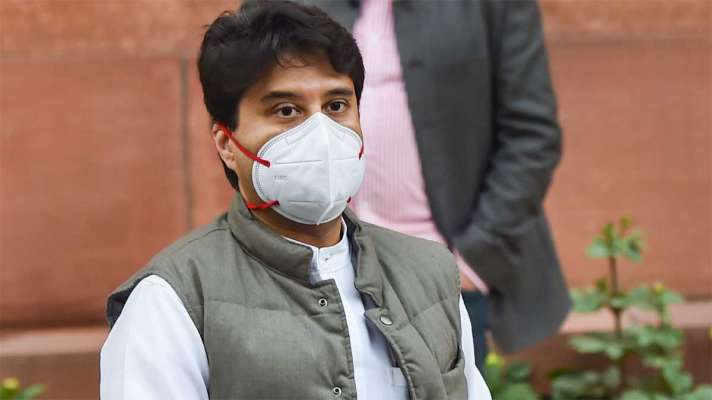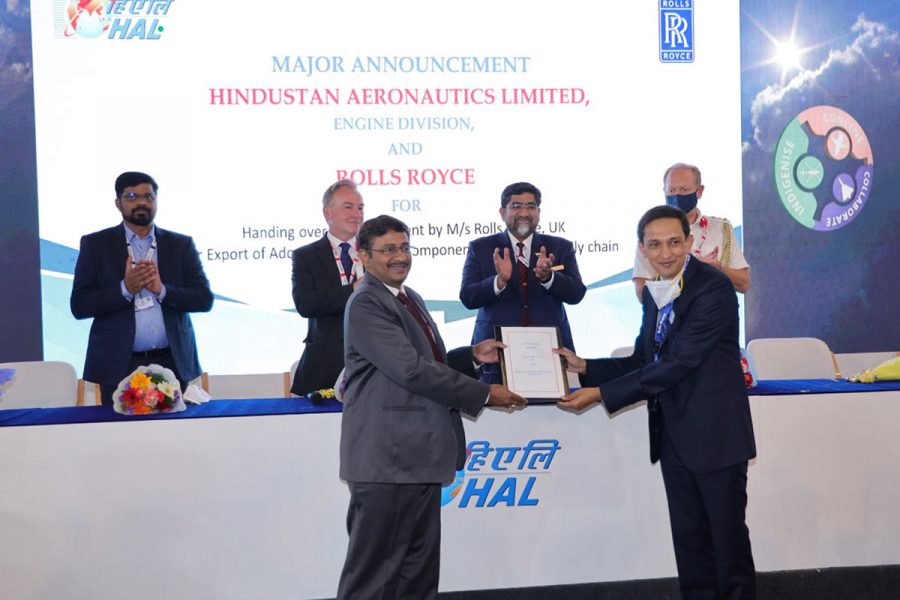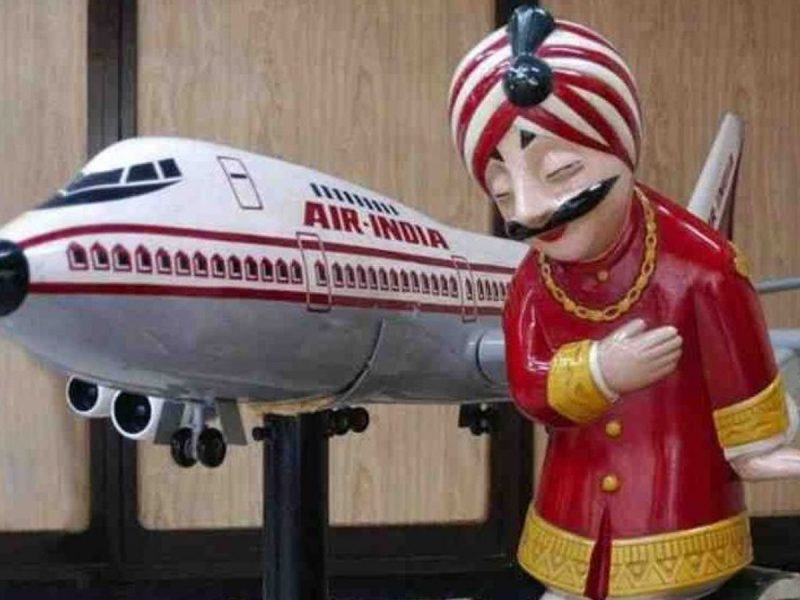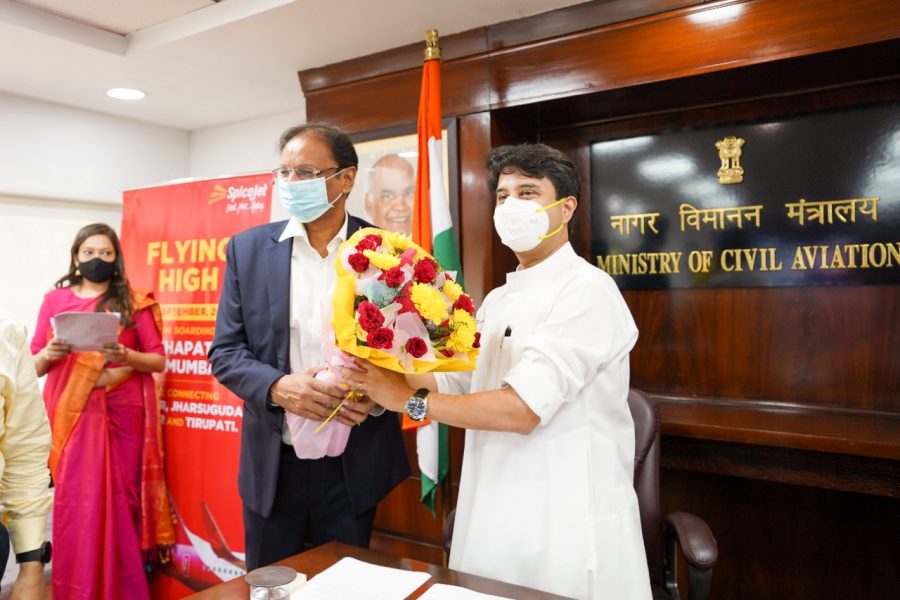Air India is the flag carrier of India with its headquarters based at New Delhi,India.
Air India had its humble beginning as Tata Air services in 1932,founded by JRD Tata. An entrepreneur and an aviator, JRD Tata also happened to be the first holder of a commercial flying license in the country.
JRD Tata / Scroll.in
Air India's foremost logo
JRD Tata designed the first logo of the carrier which was in the form of a "centaur". Designed with the concept of "Sagittarius" zodiac sign in mind, the centaur was drawn circumscribing a circle, which was believed to represent the wheel of Konark. As any Sagittarian can relate, the centaur was drawn to project an idea that aimed for higher spiritual things and the quest to know the unknown. The emblem and the lettering below were set in red against a white backdrop.
Logopedia
2007
This year saw the merger of Air India with the short-haul carrier, Indian Airlines. All flights under the Indian (Airlines) brand and ‘IC’ flight code were terminated on 26 February 2011.
The merger introduced a new livery- a Flying Swan and the wheel of Konark,only this time the wheel was much smaller and placed inside the swan's wing.
With not much difference in the overall look,the letters appeared to have grown much heavier with less spacing between them.
Petrotter
2014
It was towards the end of summer of 2014 that Air India joined the "Star Alliance" group. A new logo was unveiled thereby, although it was only a minor update from the former one.
The lettering " A Star Alliance Member" now appeared under the former logo together with a circular emblem.
Tamil Brain
The Maharaja, Air India's mascot
Poplcon.life
We call him a Maharajah for want of a better description. But his blood isn't blue. He may look like royalty, but he isn't royalBobby Kooka, the man who conceived the Maharajah
What began as an attempt to design an inflight memo pad inadvertently gave birth to the poster face of Air India's sales and promotional messages to millions of travellers across the world.
The Maharaja came to life with the collaboration of Bobby Kooka,who was then the commercial director of Air India and Umesh Rao, an artist with J.Walter Thompson Ltd. Mumbai,
The various potrayals of the Maharaja
The Maharaja has come a long way from having debuted in Air India in 1946 to the world figure he has become now. One of the most recognisable mascots, he could be anything from a lover boy in Paris,to a sumo wrestler in Tokyo, a red Indian, a monk...He's seen it all. With an innate talent to effortlessly flirt with the beauties around the world and quite easily get away with it. Why? He is the Maharaja afterall!
His unique antics and expressions have allowed Air India to promote its brand and services with an unparalleled sense of subtle humor and grace. Air India has won many international awards for humor and originality, thanks to the Maharaja.
Some lesser known facts about Air India
1. During its hayday, Air India was prominently known for its exceptional customer service. Being the perfectionist that he was, JRD Tata strived for excellence and this resulted in the airline setting high standards even for its competitors such as Singapore Airlines, Thai Airways, Cathay Pacific, and others.
2. The pampering and the inflight service was top notch so much that in the 1950s, people preferred Air India even over other airlines with better aircraft configurations. Air India was only operating the slower propellor-driven aircrafts at the time.
3. With the launch of the Boeing 707-42, Gauri Shankar, in 21st February 1960, Air India became the first Asian airline to introduce a jet aircraft in its fleet. On 11 June 1962, Air India became the world's first all-jet airline.
Wikimedia Commons
4. Air India introduced its "palace in the sky" on its first Boeing 747-200B in 1971.No other aircraft,at the time, brought into service such luxury. An epitome of luxury travel indeed.
Architectural Digest India
5. Air India holds the record for the biggest evacuation in history. During the Gulf war,Air India flew 488 flights between Amman and Mumbai over 59 days in a mission to repatriate 111,000 expats stranded in the Middle East.
6. In 2005, Air-India removed the hyphen from its name to gain a competitive advantage in computer reservation searches as the systems wouldn't recognize a "dash".
COVER: Times Now
https://www.amazon.in/gp/product/B001THL8SQ/ref=as_li_tl?ie=UTF8&tag=preet00e8-21&camp=3638&creative=24630&linkCode=as2&creativeASIN=B001THL8SQ&linkId=f290387fdfc6e95c6fd0f46ef962b684
Read next
Jyotiraditya Scindia to focus on developing connectivity to CIS countries
Radhika Bansal
16 Sep 2021

The Centre will concentrate on building air connectivity between India and countries that are part of the Commonwealth of Independent States as the world slowly comes out of the coronavirus pandemic, Civil Aviation Minister Jyotiraditya Scindia said on Wednesday, September 15.
The Commonwealth of Independent States (CIS) include Azerbaijan, Armenia, Belarus, Georgia, Kazakhstan, Kyrgyzstan, Moldova, Russia, Tajikistan, Turkmenistan, Uzbekistan and Ukraine.
“I think this is the right time for the relationship between the CIS countries and India to take off. I think India is standing ready to cooperate, invest and build. We look forward to growing our relationship, both on the ground as well as up in the air.In many ways, you are much closer to us than many of our countrymen. So there is no reason for us to not take advantage of that.As we slowly come out of this pandemic across the world, and I believe we are in that process, I am going to concentrate a lot upon building our air connectivity to CIS countries through our airlines and programmes such as UDAN, which takes people across countries and states at a very nominal cost.We will expand our freight corridors. Concentrating on cargo and air freight is extremely important as well.Not only because it saves cost and time, but also because it is a huge economic multiplier.”Jyotiraditya M. Scindia, Union Minister of Civil Aviation
Mr Scindia said at an event titled ‘Future of India-CIS Silk Route Partnerships’ organised by the Federation of Indian Chambers of Commerce & Industry (FICCI) in New Delhi.
He also noted that the flying time between Delhi and most of the CIS countries is many times shorter than the flying time between Delhi to any State in India.
For example, the flying time between Delhi and Bishkek is close to about two hours and the flying time between Delhi and Dushanbe is approximately two-and-half hours, the Minister stated.
The Minister also said robust air connectivity is fundamental in today’s day and age.
The Aviation Minister added that India already has air service agreements with most of the CIS countries even during the pandemic period.
Scheduled international passenger services have been suspended in India since March 23, 2020, due to the coronavirus pandemic. However, special flights have been operating since July 2020 under bilateral “air bubble” arrangements between India and approximately 28 countries.
The Minister also said robust air connectivity is fundamental in today’s day and age.
Read next
Budget airline SpiceJet launched 38 new domestic and international non-stop flights on September 15, 2021, in a phased manner. Accordingly, the airline launched non-stop flights connecting Delhi with Male, the capital city of Maldives, for the first time on its network.
The first flight from Visakhapatnam to Mumbai was flagged off by the Union Minister of Civil Aviation Mr Jyotiraditya M. Scindia.
https://twitter.com/flyspicejet/status/1438127020542607366
Besides the airline also launched new flights between Udaipur and Chennai which will operate thrice-a-week.
SpiceJet has also launched flights on the routes of Delhi-Surat-Delhi, Bengaluru-Varanasi-Bengaluru, Mumbai-Jaipur-Mumbai, Mumbai-Jharsuguda-Mumbai, Chennai-Pune-Chennai, Chennai-Jaipur-Chennai and Chennai-Varanasi-Chennai, the airline said in a statement on Wednesday, September 15.
SpiceJet has also enhanced frequencies on Bengaluru-Delhi-Bengaluru, Mumbai-Kishangarh (Ajmer)-Mumbai, Bengaluru-Mangalore-Bengaluru, Mumbai-Delhi-Mumbai, Chennai-Goa-Chennai, Ahmedabad-Goa-Ahmedabad, Goa-Delhi-Goa, Patna-Ahmedabad-Patna and Delhi-Patna-Delhi routes.
In addition, the airline will be deploying its Boeing 737 and Q400 aircraft on these routes.
As per the statement, SpiceJet will resume flights to and from Dubai connecting it with Mumbai, Delhi, Ahmedabad, Kochi, Kozhikode, Amritsar and Mangaluru.
“The launch of these new flights is a sign of steady revival not just for us, but for the entire aviation industry. SpiceJet will be connecting Visakhapatnam with Mumbai, Udaipur with Chennai and Delhi with Male for the first time on its network and we expect these routes to do very well. Our new flights will ensure better, easy and seamless connectivity catering especially to the huge demand during the upcoming festive season. SpiceJet will keep enhancing air connectivity by launching new flights that can support the gradual comeback of Indian aviation to pre-pandemic levels.”Ajay Singh, Chairman and Managing Director, SpiceJet
In addition, the airline will be deploying its Boeing 737 and Q400 aircraft on these routes.
“These flights will cater to the increased demand for travel and improve accessibility between metro and Tier 2 or 3 cities. The increased accessibility will also promote trade and commerce."Sanjay Kumar, Chief Strategy and Revenue Officer, IndiGo
SpiceJet is an Indian low-cost carrier based at Indira Gandhi International Airport, New Delhi. SpiceJet is one of India's largest airlines, serving domestic destinations across India. The airline commenced international operations in Oct-2010 and now provides services to overseas destinations including cities in the Asia Pacific and the Middle East.
Read next
Financial bids for Air India in process with bids from Tata Sons and SpiceJet
Radhika Bansal
16 Sep 2021
At least two entities are expected to submit financial bids on Wednesday, September 15 for Air India, marking an important milestone in the government’s plan to privatise the national carrier.
A subsidiary of Tata Sons, Talace Pvt Ltd, and SpiceJet promoter Ajay Singh have officially bid for Air India, paving the way for the government to fully exit the loss-making national carrier. The national carrier and its subsidiary Air India Express may have together been valued in the range of INR 15,000-20,000 crore by Tata, according to people familiar with the bidding process.
“The valuation is a rough estimate of the assets (aircraft) owned by the beleaguered airline being sold by the government,” said the people cited above.
Tata winning Air India would be a homecoming of the airline for the group, which had transferred the company to the government in 1953. (Image Courtsey - MoneyControl)
The board of Tata Sons had given a free hand to its chairman on the bid, mentioning a price range the group would be comfortable paying for the troubled carrier. “The bid is quite within that range mentioned,” an official aware of the matter said.
Among the suitors, sources confirmed is the Tata Group, which is also the frontrunner. Tata winning Air India would be a homecoming of the airline for the group, which had transferred the company to the government in 1953.
The Tata Group is set to bid through a holding company and the group has also convinced SIA, its joint venture partner in Vistara, to integrate the network with Air India, if they get it.
The government will sell a 100% stake in Air India and its low-cost subsidiary Air India Express, and 50% in ground handling company Air India SATS. “Financial bids for Air India disinvestment received by transaction adviser. The process now moves to the concluding stage,” Tuhin Kanta Pandey, secretary in the Department of Investment and Public Asset Management (DIPAM), tweeted on Wednesday, September 15.
https://twitter.com/SecyDIPAM/status/1438105827789840392
‘Future Plans to Keep Evolving’ The winning bid is likely to be announced before the end of this month and the government plans to transfer the airline by the end of this fiscal year. Once the government announces the winner, Tata Sons (if it is shortlisted) is expected to create one holding company for all its aviation businesses, possibly under Talace.
“Talace has just put in the bid. Future plans will keep evolving. What the group is looking at in terms of valuations is just pureplay aircraft on the books of Air India and Air India Express, especially the ones owned by them,” the people close to the bidding process said.
Talace was incorporated in August 2020 purely to make an official bid on behalf of Tata Sons, sources said. Directors include Eruch Noshir Kapadia, Saurabh Mahesh Agrawal and Nipun Aggarwal. SpiceJet promoter Ajay Singh has also put in a bid in his personal capacity along with two other investors
As per the Air India EoI floated by DIPAM in January 2020, of the airline's total debt of INR 60,074 crore as of March 31, 2019, the buyer would be required to absorb INR 23,286.5 crore.
The government has finally succeeded in getting financial bids for Air India in its second attempt, as the first in 2018 did not elicit any interest because it had planned to retain a 26% stake even after privatising the national carrier.
Debt Transfer Air India will be transferred with a debt of INR 23,000 crore, while the rest of its debt will be transferred to government-owned Air India Asset Holdings Ltd (AIAHL), which will house the carrier’s assets like the Air India building in Mumbai, Airlines House in Delhi, four acres of land in Delhi’s Connaught Place and various housing societies in Delhi, Mumbai and other cities.
Subsidiaries such as Air India Engineering Services Ltd and Air India Air Transport Services Ltd will also be part of AIAHL. The government plans to monetise these assets and repay that portion of Air India’s debt which it will hold on to after handing over the carrier to its new owners. Before the handover, the government may have to take on at least INR 20,000 crore more of debt which the airline had accumulated over the past two years. In 2018, the government had transferred to itself debt worth about INR 22,000 crore from the airline.
At present Air India has control over 4,400 domestic and 1,800 international landing and parking slots at domestic airports, as well as 900 slots abroad.
As per the Air India EoI floated by DIPAM in January 2020, of the airline's total debt of INR 60,074 crore as of March 31, 2019, the buyer would be required to absorb INR 23,286.5 crore. The rest would be transferred to Air India Assets Holding Ltd (AIAHL), a special purpose vehicle.
Air India’s subsidiaries such as Air India Engineering Services and Air India Air Transport Services will also be part of AIAHL. At present Air India has control over 4,400 domestic and 1,800 international landing and parking slots at domestic airports, as well as 900 slots abroad.
Read next
HAL to partner with Rolls Royce for the production of "Make in India" Ardour engine parts
Prashant-prabhakar
16 Sep 2021

HAL, the defense PSU seems to be on a roll as it signs yet another deal, this time with Rolls Royce for "Make in India" Ardour engine parts. This comes just days after the PSU signed a contract with GE Aviation(USA) for the acquisition of 99 F404-GE-IN20 engines which would power the indigenously made LCA Thejas.
This would be a follow-up to the MoU signed by Rolls-Royce and HAL during the Aero India 2021 to establish an authorized maintenance center for Adour at HAL to support international military customers and operators.
The Indian Express
This is the first order for the supply of spares for the Adour Global Supply chain. We plan to be a key player in the supply chain of Adour engines and expect more orders to follow. We look forward to working with Rolls-Royce to build on this capability to serve the global market for the supply of spares and MRO of Adour enginesHAL said in a press statement
HAL CMD, Mr. R Madhavan believes that with over 30 years of experience in providing support repair and maintenance services for the Adour engines in India, HAL is now ready and possesses the capacity to handle a large defense customer base.
Our valued partnership with HAL has grown from strength to strength over the last few decades and this is a significant step towards strengthening the defence manufacturing ecosystem in India, and to help catapult India’s vision for the defence sector to ‘make in India’ for the worldKishore Jayaraman, President, Rolls-Royce India and South Asia from Rolls-Royce said
Kishore Jayaraman / DNA India
Alex Zino, Executive Vice President – Business Development and Future Programmes (Defence), Rolls-Royce, chimed in his thoughts- " We are excited to expand our long-standing partnership with HAL to support long-term sustainment of our Adour engines for both Indian and global customers".
He further stated the MoU signed would create opportunities in India to increase its defense exports now that the demand forecasted for high precision equipment is high.
COVER: The News Minute
Read next
Privatisation of airports to be done through clubbing model, 13 next in line
Radhika Bansal
14 Sep 2021
The board of the Airport Authority of India has approved to privatise 13 airports. This is the first major asset monetisation exercise by the government as part of the National Monetisation Pipeline. The government is aiming for private investment of INR 3,660 crore in airports by FY24.
The AAI board has approved the privatisation of six major airports-- Bhubaneshwar, Varanasi, Amritsar, Trichy, Indore, Raipur—along with seven smaller ones in Jharsuguda, Gaya, Kushinagar, Kangra, Tirupati, Jabalpur and Jalgaon, according to sources. The smaller airports will be clubbed with the six major airports for scale and size, thereby making them attractive for investors.
AAI will now appoint a consultant to prepare the bid document and determine the concession period and reserve price. The bids are likely to be called by early 2022.
The board of the Airport Authority of India has approved to privatise 13 airports.
This is the first time the model of clubbing major airports with smaller ones will be used in the airport privatisation exercise.
“To ensure commensurate development of non-profitable airports along with the profitable airports with the help of private sector investment and participation, pairing /clubbing of smaller airports with each of the six bigger airports and leasing out as a package is being explored.” The National Monetisation Pipeline document prepared by Niti Ayog
While Jharsuguda airport will be bundled with Bhubaneswar, Kushinagar and Gaya airports will be clubbed with Varanasi. Kangra, Amritsar, Jalgaon and Trichy airports will be clubbed with Raipur Jabalpur, Indore, and Tirupati airports, respectively.
Prospective investors and consultants said airports would see good participation from bidders, though there will be pressure on valuation. They pointed out that Varanasi along with Gaya and Kushinagar will attract investor interest as all three airports fall on the Buddhist circuit and typically get international visitors.
"This round of privatisation could very well be the last chance for an entity looking to enter India's airport sector. With returns assured on aero assets, some of the existing players will look to increase their scale rather than allowing fresh entrants and competition." Jagannarayan Padmanabhan, Director and Practice Leader (transport and logistics), CRISIL
The regulatory regime followed in India gives airport developers a return on investments to upgrade assets through passenger fees, landing and parking charges as well as fuel charges. The return remains fairly visible and stable, according to analysts.
In the last round of privatisation, the Adani group bid aggressively to win all six airports- Ahmedabad, Jaipur, Lucknow, Thiruvananthapuram, Mangaluru, and Guwahati. The bid amount in some cases was double that of the second highest bid.
The Adani Group will soon take over Jaipur, Guwahati and Thiruvananthapuram airports and also build Navi Mumbai Airport. (Image Courtsey - Ahmedabad Mirror)
The airpots being developed and run PPP way so far include those at Hyderabad, Bengaluru, Delhi, Mumbai, Kochi, Ahmedabad, Lucknow and Mangaluru. The Adani Group will soon take over Jaipur, Guwahati and Thiruvananthapuram airports and also build Navi Mumbai Airport. All these airports were privatised on a standalone bases. The promoter of Mumbai Airport gets the right to build Navi Mumbai Airport.
According to rating agency ICRA, the aggressive bidding would result in a windfall for the AAI, which could earn more than INR 600 crore per year as concession fees from the Adani group.
However, a senior government official involved in NMP said the government had done a study and gauged investor appetite in airport projects following the impact of Covid-19 on aviation. The study showed that despite the decline in passenger traffic and revenue of airports due to the pandemic, investor interest continues to remain stable.
(With Inputs from Business Standard)




Comment